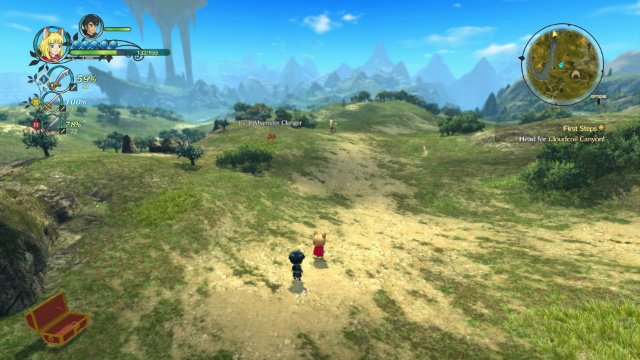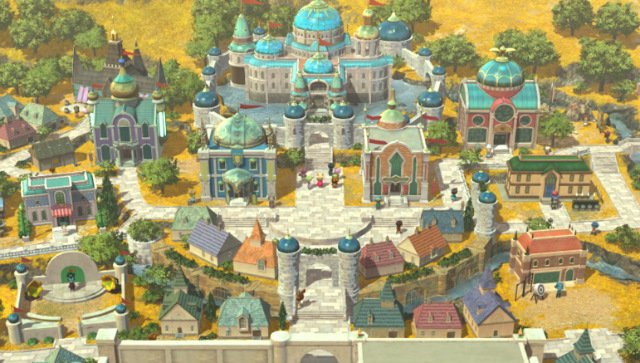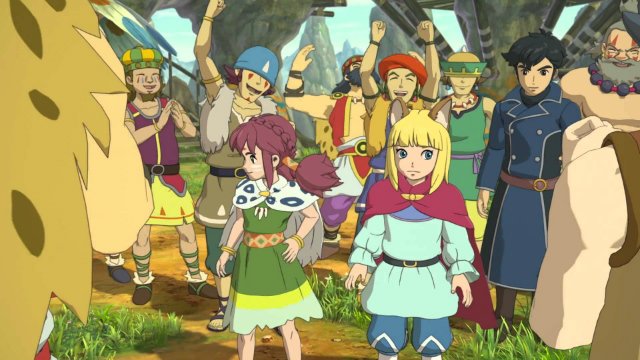When I was young, my genre of choice was the JRPG. In the days of the SNES, if you wanted a long game with an in-depth story, there wasn’t any other option on consoles. With the release of the Nintendo 64 and PlayStation that all began to change though. The PlayStation, of course, had a fantastic collection of JRPGs, but more “action-packed” games started appearing. Games like Metal Gear Solid that made the slow-paced, methodical exploration and combat of the traditional JRPG feel a bit lackluster in comparison.
I never stopped loving JRPGs, but over time I found it hard to be excited when I heard a new one was coming out. For a time it seemed like the genre was stagnant, with the same tired tropes and turn-based combat popping up time and again. I wasn’t fond of the original Ni no Kuni, and I found it to be extremely slow and plodding. It’s because of this I was shocked at how much I love Ni no Kuni 2: Revenant Kingdom, and how it’s given me a renewed appreciation for JRPGs in general.
Ni no Kuni 2 is as traditional an RPG as you can get, but all aspects have been modernized to make what might be the ultimate form of the formula that provided Square’s success in the 1990s.

A big one for me is that there’s a world map. Instead of traveling through interconnected maps to simulate moving through the world like Final Fantasy 12 did, or being a vast, open-world experience like Final Fantasy 15, Ni no Kuni 2 has a classic world map that is full of optional areas to explore, and gives a feeling of being part of a huge world.
When JRPGs largely abandoned the world map concept in the last decade or so, I feel like a lot of them began lacking the feel of being involved in a world-wide story. One of the aspects of the JRPG is that you’re almost always involved in some event that shakes the foundations of society as a whole, and when everything feels so closed in it just doesn’t seem as urgent as it should.
I love the Suikoden series, and it’s unique system where you have the option to recruit up to 108 characters to aid you in your struggle. Suikoden also allows the play to have their own HQ, in which you can visit the plethora of members you’ve recruited. Ni no Kuni 2 takes this a bit farther with its Kingdom System.

You can’t add a huge amount of characters to your main party in Ni no Kuni 2 as you could with Suikoden. However, each of the 100+ citizens you can invite to live in your Kingdom of Evermore has their own personality, own specialty, and most have a unique quest you have to perform that introduces you to them and shows their character. Their specialties come in handy when you’re expanding your kingdom by building facilities that can do things like develop new weapons or provide new resource items.
There hasn’t been a new main series Suikoden game since Suikoden 5 in 2006, and Ni no Kuni 2 reminds me of how much of a shame it is that Konami has abandoned the series. Suikoden 2, in particular, was one of my favorite JRPG experiences, and though it hasn’t aged super well, Ni no Kuni 2‘s Kingdom series allowed me to relive some of the fun I had recruiting the 108 Stars of Destiny.
Ni no Kuni 2‘s plot is lovingly 1990s JRPG, but it revels in it. It’s heartfelt and light-hearted, and it recalls a ton of classic tropes charmingly. It reminded me of games like Final Fantasy 6 and Golden Sun, but in a way that casts a fond light on those titles. The events that transpire in the game aren’t necessarily original, but they channel a nostalgia that anyone who played JRPGs in the 1990s will feel.
Ni no Kuni 2 is an excellent example of a modernization of JRPG traditions. It doesn’t challenge the genre as Final Fantasy 15 does. Instead, it embraces its past, but updates and perfects it in a way that makes it an absolute joy to play. Not only is the game good in and of itself, but it also does an excellent job bringing to mind awesome adventures you’ve had with past hits in the genre. I can honestly say this game has me in full JRPG fever mode, and I can’t wait to go back and play some of the games I loved, and some I’ve missed, soon.











